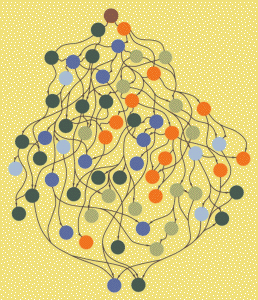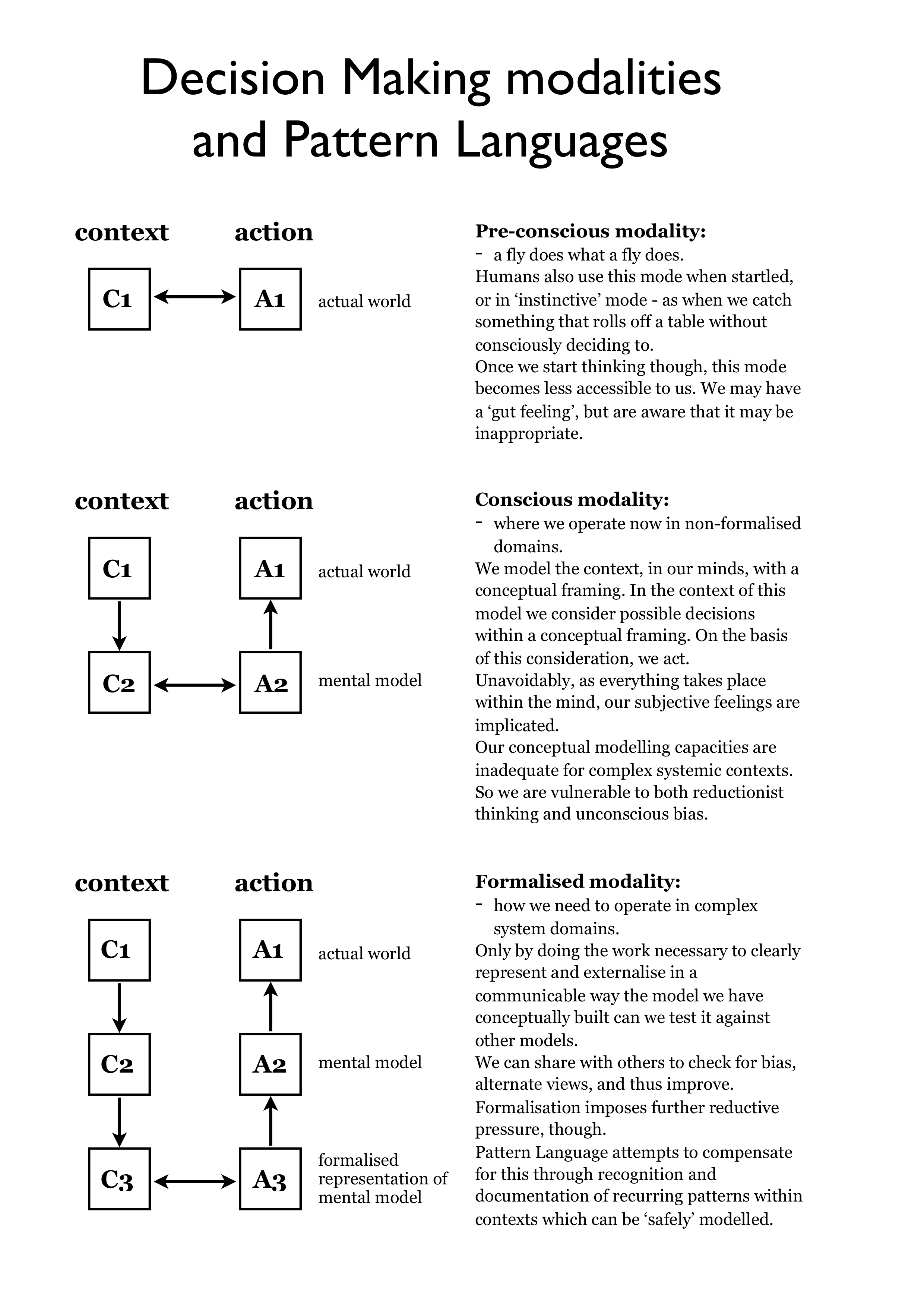
Pattern Languages
sketch

Desirous of interacting beneficially with the Melted Unity that is reality, we build Pattern Languages. Through familiarity and practice with these, we hope to become capable with the Poetry of the Language , and in the end, become capable of Transcending Patterns.
eee
Over the last millennium or more, humans have developed and refined a concept-driven, conscious approach to more and more of life. If we consider concepts that relate directly to sensory experience as first-order, and those derived from consciously developed relations between these as second order, and so on, then it is clear that the concepts required to build computers, or critical theory, or industrial supply chains are of an order far removed from these first order concepts. They have been hyper-developed.
This history has led us to our current condition - one in which more than 50% of humanity lives in urban settings. We live in environments which are increasingly designed, implemented and operated according to conceptual frameworks. Conscious cognition and decision making on the basis of increasingly hyper-developed conceptual frameworks is becoming the dominant mode of existence.
We don't consider this to be anything but what humanity does. No moral judgement should be implied here, for understanding and acceptance of this reality is imperative - if only for the reason that this mode of existence is currently having dangerous impact on the carrying capacity of the biosphere.
As an evolved and hyper-social species of high intelligence, our unconscious minds have astonishing capacity to absorb, process and analyse complex reality. Consequently, interaction with the systems we have co-evolved with would be expected to be effective - otherwise our species would have become extinct.
But the time-frame over which our hyper-developed conceptual frameworks have been developed is far too short to have had any significant evolutionary impact on our subconscious capacities.
For convenience here, we can refer to these environments that are predominantly framed, designed, built and interacted with in terms of hyper-developed concepts as simply 'human-made environments'.
We are increasingly aware of what have come to be known as 'cognitive biases'. These seem likely to be evolved heuristics, operating subconsciously. As such, they will clearly be adapted for the setting of human evolution - social groupings of limited size, operating in environments largely emerging from the complex, unplanned processes of geology and biosphere - a setting which is perhaps the ultimate example of a Melted Unity.
These cognitive biases are increasingly being called to our attention now, we believe, because it is bcoming apparent that they are not 'fit for purpose' when applied to the human-made environments in which we live. In 'Thinking Fast and Slow', Daniel Kahneman essentially makes this case, albeit using different terminology.
This diagram, adapted from Christopher Alexander's 1961 PhD thesis, 'Notes on the Synthesis of Form', clarifies the point, and makes a further one - that in order to become more adept at managing human-made environments we need to get the decision making process out of our minds - use some kind of formalised representation.

Pattern Language approaches seek to develop a formalisation mode that simultaneously meets several requirements.
We wish to be able to analyse and document complex human-made systems in a way that supports us well. The format needs to be at once loose - to avoid mechanistic reductivism - and rigorous - to tease out cognitive bias and maximise clarity. It needs to be applicable to a wide variety of cases and conditions - human-made systems operate on multiple interacting levels, from the brute mechanical to the pre-consciously emotional. It needs to be useful - easy to interact with and understand, adaptable to the specifics of circumstance, yet definitive.
This document attempts a detailed analytical description of the Pattern Language approach.
We can look at the developing Pattern Language of Money as an example of a Pattern Language.
Therefore:
eee
Make sure that the languages you build are engaging and open to development - that they constitute a developing and dynamic Living Language . Do what you can to encourage an understanding of the language as Social Poetry, and not any kind of meccano-like constructor set. Engage with relevant stakeholders within the domain, seek their involvment and encourage the development within that community of groups of Language Gardeners. Remember the Life cycle of a Language.